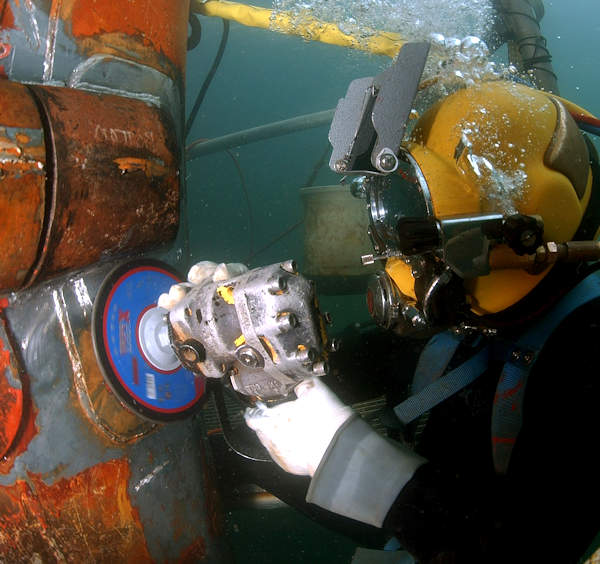Underwater Hull Cleaning – Insights and Costs

The implications of hull fouling are twofold: economic and environmental.
Firstly, a fouled hull directly correlates with increased fuel consumption. The added resistance means that ships need to burn more fuel to maintain their standard cruising speed. In an industry where fuel costs can constitute a significant portion of operational expenses, this increase can heavily dent a shipping company’s profits. Depending on the extent of the fouling, fuel efficiency can be compromised by anywhere from 5% to a staggering 40%.
* Please send feedback/suggestions to editor @ shipuniverse.com
On the environmental front, hull fouling introduces the risk of transporting invasive marine species to regions where they’re not native. These non-native species can have a domino effect on local marine ecosystems, disrupting the balance, displacing native species, and sometimes even leading to the collapse of local fisheries. Given the global nature of shipping routes, this is a concern that resonates across international borders.
Traditional vs. Modern Cleaning Methods
Historically, hull cleaning was a labor-intensive task, reliant on skilled divers equipped with brushes and handheld tools. These divers would manually scrub and clean the hull, a process that was not just time-consuming but also posed risks due to human error. Uneven cleaning or excessive force could damage the hull’s protective coating or paint.
Enter the age of technology. Modern advancements have introduced robotic solutions to this age-old challenge. These automated and semi-automated machines can adhere to the hull’s surface, methodically cleaning it with precision. Not only do they reduce human error, but they also document the cleaning process, providing shipowners with real-time visuals of the hull condition. Another notable advantage is the speed; robotic solutions can often complete the task in a fraction of the time it would take a team of divers.
Innovations in Underwater Hull Cleaning
The maritime industry, with its deep-rooted traditions, has not remained impervious to the winds of technological change. Over the years, innovations have made underwater hull cleaning more efficient, eco-friendly, and cost-effective.
- Automated and Semi-Automated Cleaning Robots: As ships grow in size and complexity, the challenges of manually cleaning their hulls increase. Robots, designed specifically for hull cleaning, have entered the arena to meet these challenges. These devices navigate the contours of a ship’s hull, removing biofouling with precision. They’re equipped with cameras and sensors, ensuring a comprehensive clean while avoiding any undue stress on the hull’s protective coatings.
- Eco-Friendly Cleaning Solutions: Traditional cleaning methods often resulted in paint chips, metal particles, and biofouling detritus being discharged directly into the ocean, causing pollution. Modern cleaning solutions, however, prioritize environmental sustainability. Innovations like capture filtration systems, which recover and treat debris, prevent pollutants from entering marine ecosystems. Additionally, new eco-friendly cleaning agents and tools ensure minimal damage to the hull’s paint and reduce the risk of toxin release.
- Advanced Monitoring Systems: The latest hull cleaning systems come with advanced monitoring features, allowing shipowners and operators to observe the cleaning process in real-time. High-resolution cameras provide detailed imagery, ensuring quality control and instant feedback. This transparency has revolutionized the hull cleaning process, giving stakeholders peace of mind and enabling immediate course corrections if needed.
Budgeting for Underwater Hull Cleaning
While the benefits of hull cleaning are evident, shipowners and operators often grapple with budgetary considerations. Here’s a breakdown of the costs and potential savings:
- Vessel Size and Type: Larger vessels, unsurprisingly, cost more to clean due to the increased surface area. A VLCC (Very Large Crude Carrier) will have a higher cost than a smaller container ship or bulk carrier. Additionally, some vessels might have complex structures underwater that could make cleaning more challenging and thus more expensive.
- Extent of Fouling: The more fouling present on the hull, the more labor-intensive (or machine-intensive) the cleaning process will be. Heavy fouling will require more time and specialized equipment, which will increase costs.
- Cleaning Method:
- Manual Divers: This traditional method involves divers using brushes and tools. Costs include diver wages, equipment, and potential diver risk premiums.
- Robotic Cleaning: Automated and semi-automated cleaning robots might have higher upfront costs, but they can be more efficient and reduce labor costs in the long run. However, the use of robots may involve additional operational or rental costs.
- Port and Location: Rates vary by country and specific port. Some regions might have more competitive pricing, while others may charge a premium due to higher demand or specialized services.
- Environmental and Disposal Fees: Some ports charge fees for the collection and disposal of the fouling removed from ships to ensure it doesn’t harm the marine environment. These fees can vary significantly.
- Specialized Services: If a ship requires special care, such as the removal of specific invasive species or the use of eco-friendly cleaning agents, it might incur additional costs.
- Emergency or Expedited Services: If a ship requires cleaning on short notice or during non-standard hours, there might be additional charges.
- Additional Inspections or Services: Some companies offer bundled services, which might include underwater inspections, minor repair work, or propeller polishing. These will add to the overall cost.
As a ballpark figure, for large commercial vessels, you might expect costs starting from a few thousand USD to tens of thousands, depending on the factors above. However, for specific quotes or updated pricing, it’s always best to contact service providers directly or check with local port authorities.
Best Ports for Underwater Hull Cleaning
Navigating the vast seas, ships encounter a variety of marine conditions, and with time, biofouling becomes inevitable. It’s crucial to know which ports around the world offer top-notch underwater hull cleaning services.
- Criteria for Selecting Ports:
- Equipment Availability: The presence of advanced robotic equipment and eco-friendly cleaning solutions is crucial for efficient cleaning.
- Skilled Labor: Trained personnel, well-versed in the intricacies of underwater cleaning, ensure a job well done.
- Environmental Regulations: Some ports have stringent regulations to protect local marine ecosystems. While this might affect the methods available, it also ensures eco-friendly cleaning.
- Overview of Top Ports:
- Ports such as Singapore, Rotterdam, and Dubai, known as global maritime hubs, offer state-of-the-art hull cleaning services.
- Regional Differences: The Asia-Pacific region, with its bustling maritime activity, boasts several ports equipped for underwater hull cleaning. In Europe, ports like Rotterdam and Antwerp lead the charge, while in North America, ports along the West Coast, including Los Angeles and Vancouver, are noteworthy.
Regulatory Landscape
As the maritime industry evolves, so does its regulatory framework. As underwater hull cleaning impacts marine ecosystems, it’s become a focal point of several maritime regulations.
- Concerns over Marine Pollution: The primary regulatory concern stems from the potential environmental hazards of hull cleaning, including the release of toxins and transfer of invasive marine species.
- Port State Control: Various ports have their regulatory bodies that oversee maritime activities. While some ports have embraced underwater cleaning with open arms, others have implemented strict guidelines to ensure marine safety.
- International Maritime Organization (IMO) Guidelines: The IMO, recognizing the global implications of hull cleaning, has laid down guidelines. These primarily revolve around ensuring minimal environmental impact and promoting safety during the cleaning process.
Guide for Commercial Ship Owners
For shipowners, understanding the nuances of underwater hull cleaning is vital to ensure their vessels remain in top-notch condition.
- Factors to Consider: Before diving into the cleaning process, shipowners should assess the extent of fouling, consider local port regulations, and evaluate the available cleaning methodologies.
- Best Practices: It’s essential to:
- Opt for eco-friendly cleaning solutions that minimize marine pollution.
- Ensure that the cleaning process doesn’t compromise the integrity of the ship’s hull or its protective coatings.
- Collaborate with providers who offer real-time monitoring for better quality control.
- Importance of Keeping Records: Documentation isn’t just a bureaucratic necessity; it’s a testament to the ship’s maintenance history. Detailed records of each cleaning session, including methods used, extent of fouling, and any potential issues encountered, can be invaluable. Such documentation not only helps in maintaining the ship but also in adhering to regulatory guidelines and in potential resale situations.
Future of Underwater Hull Cleaning
The maritime industry, like many others, is poised on the brink of significant transformation, driven by technological advancements and sustainability concerns. This evolution impacts every facet, including the domain of underwater hull cleaning.
- Advancements in Hull Coatings: The next frontier in anti-fouling paints isn’t just about repelling marine growth but doing so in an eco-friendly manner. Research into non-toxic, biodegradable coatings that employ nanotechnology and biomimicry promises a future where ships are both clean and green.
- Predictive Analytics and AI: With the power of big data and machine learning, ship maintenance is getting smarter. By analyzing patterns in fouling growth, environmental conditions, and ship usage, AI-driven platforms can predict the optimal time for hull cleaning, ensuring maximum efficiency and minimum disruption.
- Standardization and Regulations: As the practice of underwater hull cleaning becomes more common, there’s a growing call for global standardization. Standardized protocols, coupled with international regulations, can ensure consistency in cleaning quality and environmental protection across ports worldwide.

Do you have a Maritime Product or Service that may be of interest to Shipowners? Tell us about it here!
Do you have feedback or insights? Please reach out to editor @ shipuniverse.com



